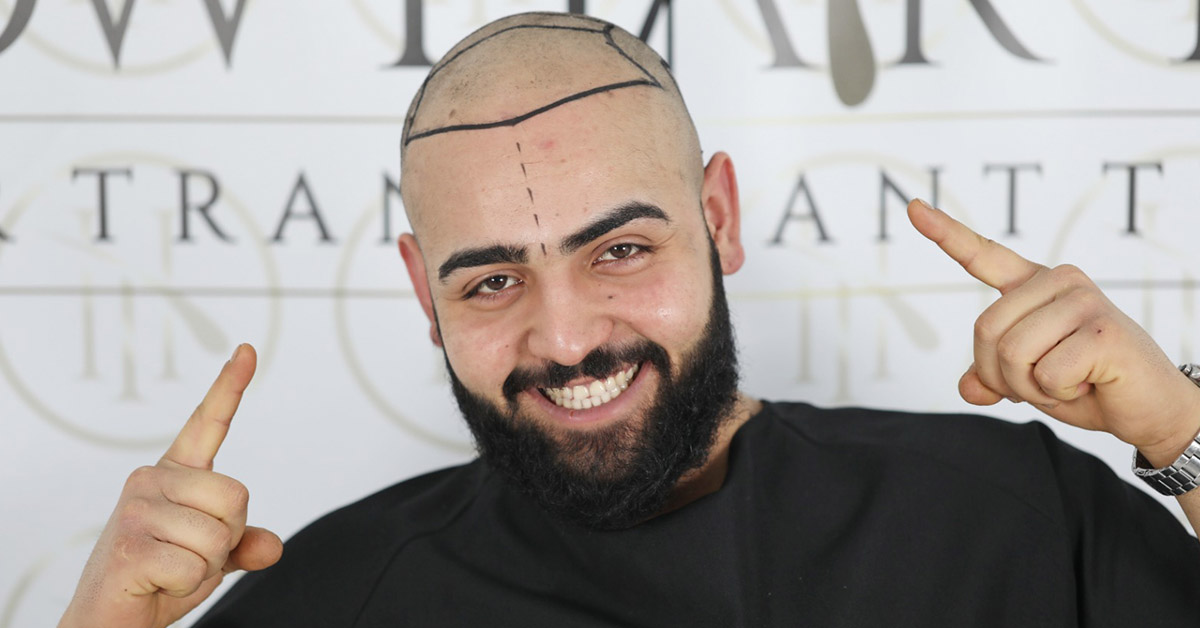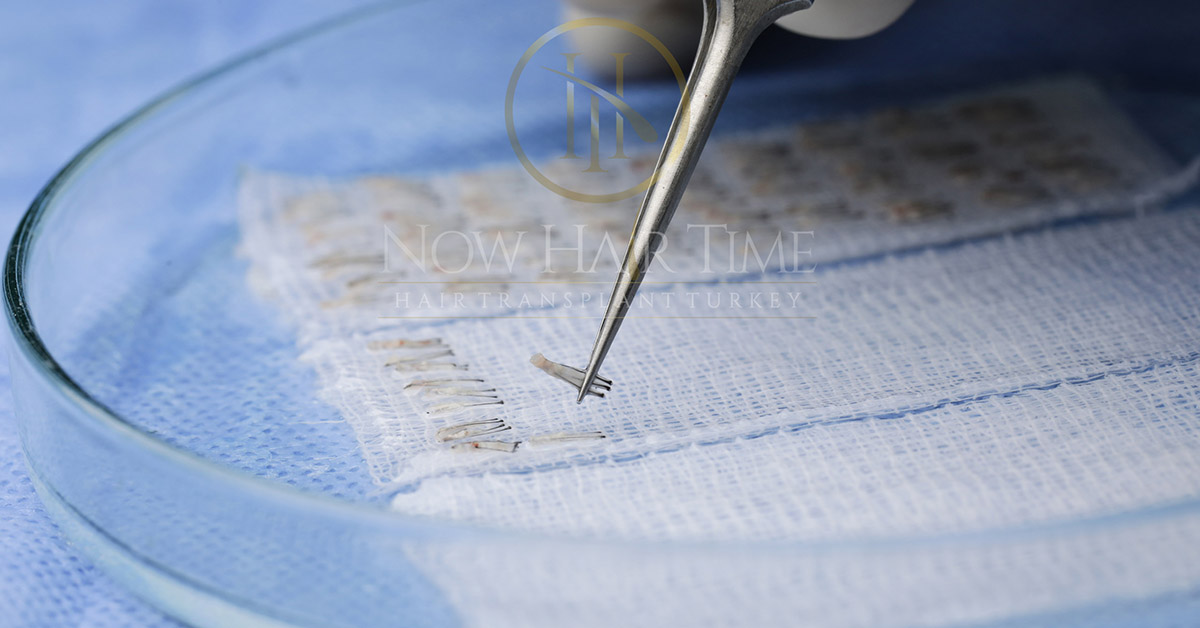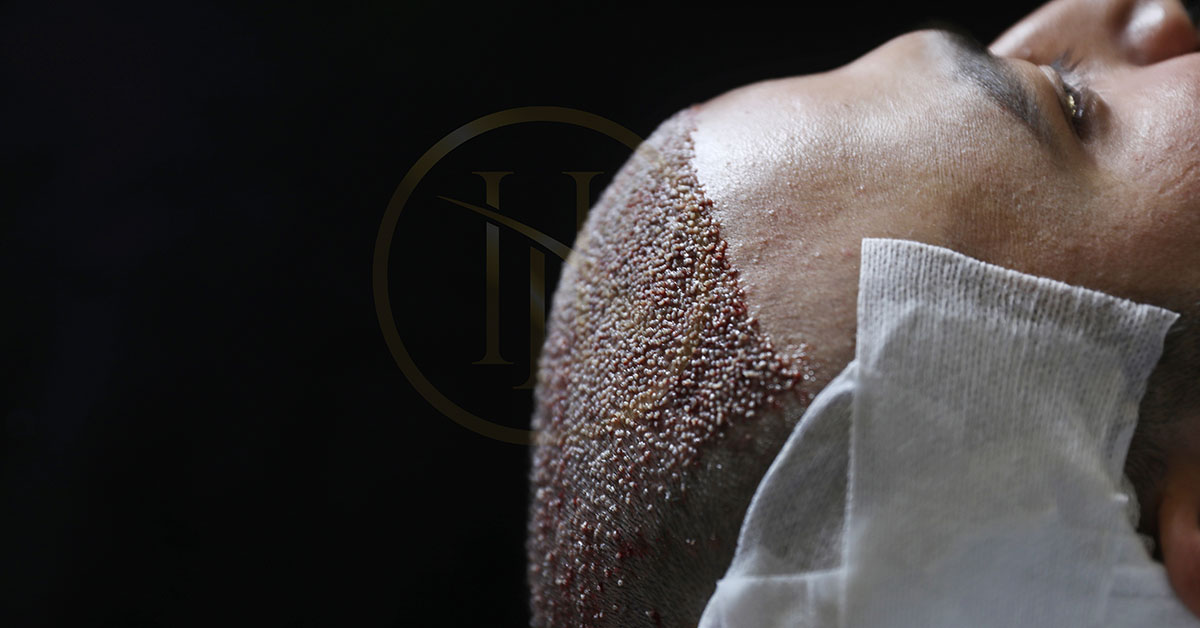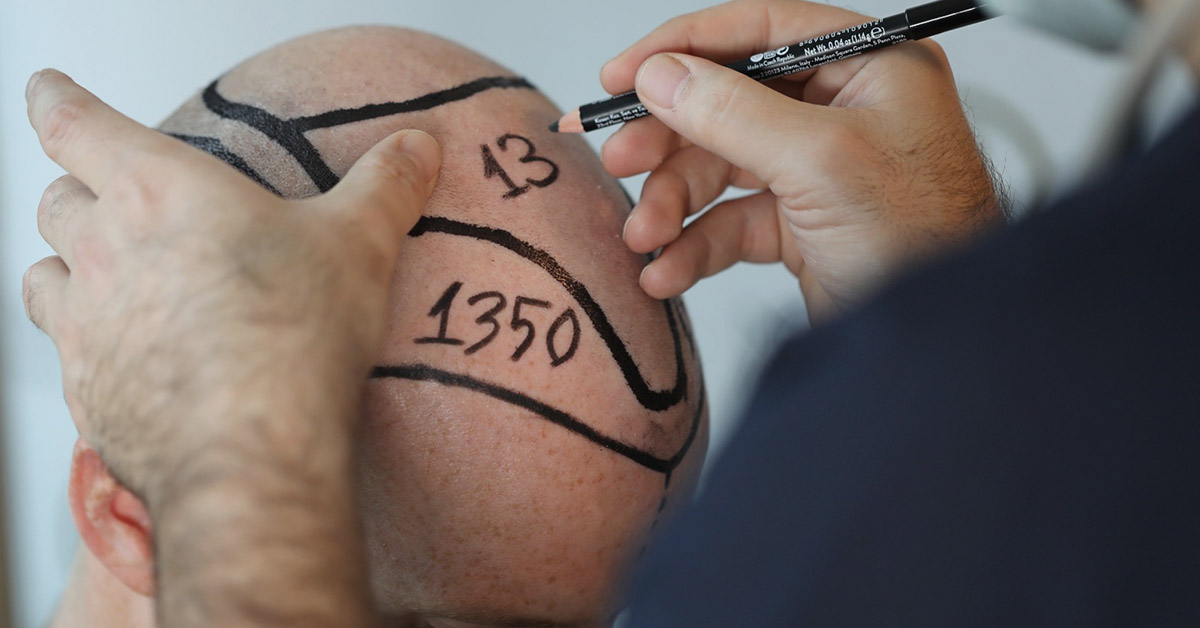Can Hair Transplant Be Performed Without Hair Shaving?
Hair loss and baldness is an important problem that many people experience for a long time and has been trying to be correct for a long time due to aesthetic concerns. Most people try to hide this situation with certain hairstyles or other methods.
Many people who decide to have a hair transplant but learn that their hair will be shaved shortly during the procedure, avoid the procedure just for this reason. Therefore, methods of unshaven hair transplant have been developed today depending on the condition of the person.
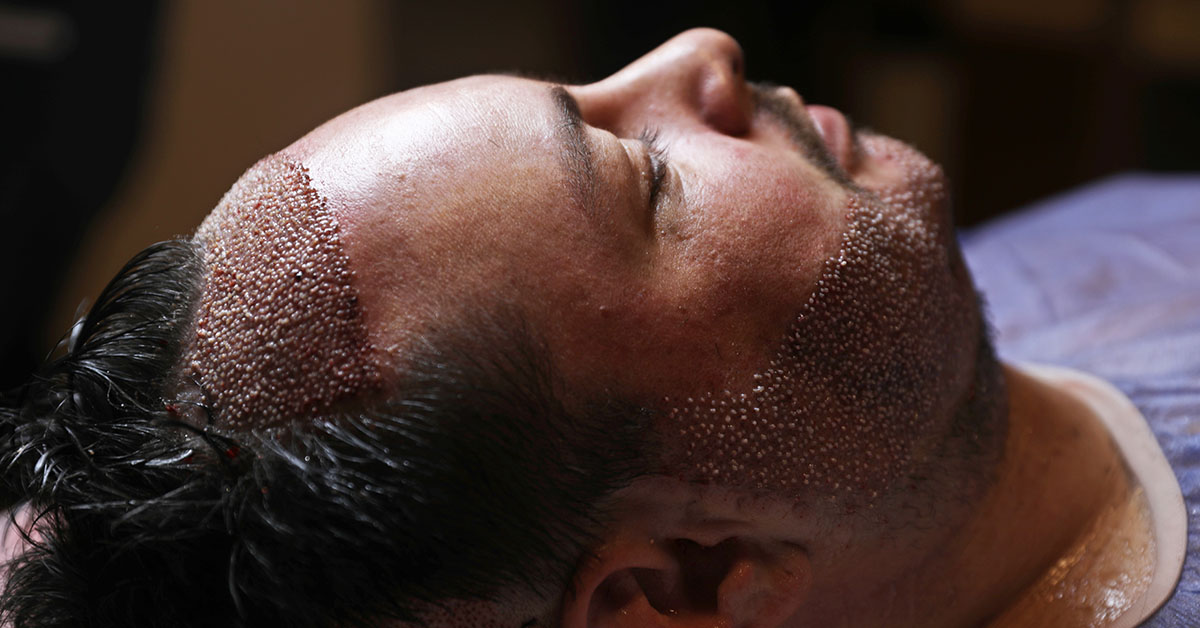 When looking at the history of the hair transplant process, the development stages of the techniques can be seen more clearly. At first, it was tried to be transplanted to the bald area by removing the scalp completely.
When looking at the history of the hair transplant process, the development stages of the techniques can be seen more clearly. At first, it was tried to be transplanted to the bald area by removing the scalp completely.
In time, many methods such as FUT (Follicular Unit Transplantation), FUE (Follicular Unit Extraction), Sapphire FUE (FUE with a sapphire tipped pen), DHI (Direct Hair Implantation) have been developed, enabling people to gain a healthier and natural appearance thanks to a hair transplant. At Now Hair Time Hair Transplant Turkey, we will give detailed information about the hair transplant techniques that we can perform in our clinic with or without shaving.
Development of Hair Transplant Techniques
Although some data are showing that the scalp was firstly transplanted to the balding area in the 19th century, it is difficult to obtain detailed information about the transfer technique and the results obtained. Later, a dermatologist in Japan tried to do eyebrow and eyelash transplants with more modern methods. However, in 1950, the first modern hair transplant procedure was performed by Dermatologist Orentreich in New York.
Although there were doubts about the permanence and growth of the transplanted hair, thanks to Orentreich, these concerns were eliminated, and hair transplant techniques were able to develop over time. However, the fact that hair transplant has become so famous was realized by Rassman's micro-surgical method of transplanting thousands of hair follicles. In 1988, Masumi Inaba introduced 1mm punches in Japan and the name of the FUE technique was first introduced in the medical literature by William R. Rassman and Robert M. Bernstein in 2002.
What is Unshaven Hair Transplant?
A hair transplant, which is applied without cutting some of your hair or all of the hair before the transplant process, is called an unshaven hair transplant. Many people wonder whether or not they can have an unshaven hair transplant. Of course, the answer to this question depends on the person to be treated.
Why Shaving Is Necessary for Hair Transplant Technique?
Before the hair transplant, the hair in both the donor area and the recipient area should be shaved to harvest the grafts more easily and to transplant into the recipient area more smoothly and healthily. Some techniques may not necessarily require shaving the hair completely.
Why is Unshaven Hair Transplant Demanded?
The idea of hair transplant without cutting their hair very short is very attractive to people who want to have a hair transplant. Especially women avoid applications that will show that hair transplant has been done.
People who are likely to have trouble due to their job, and those who do not want to reveal that they have had a hair transplant, tend to prefer unshaven hair transplants. This application is highly demanded by people who want to have a chance to return quickly to their social life and the opportunity of covering the incrustation in the transplanted area with long hair is also appealing for people.
Who Can Have Unshaven Hair Transplant?
- Women
- Men with a hair length of 7-8 cm
- People who are fewer bald areas and want more thick hair
- People who prefer the pen technique (DHI)
- People who have had transplants before and want to have additional sessions
However, together with the technique to be used, the size of the area to be transplanted in unshaven hair transplant, the density of the hair in the donor area, and the length of the person's hair are also factors in this case. The number of grafts that can be transplanted in the unshaven application is between 1000 and 2000.
Except for some cases, no technique is not shaved completely. Even if it is on a small surface, the hair in the donor area is shaved. These areas, which are generally opened on the back of the nape and the back of the head, can be covered, and hidden with the help of long hair. Generally, in women, this procedure is applied in the area to be transplanted without shaving.
Which Methods Are Used More in Unshaven Hair Transplant?
Unshaven Hair Transplant with Sapphire FUE Technique
FUE technique made with sapphire-tipped pen offers some advantages compared to hair transplant with the help of classical punch. Channels opened with sapphire tips can reduce the need for shaving as they can be both smaller and more frequent.
Thanks to the sapphire tips, cleaner channels can be opened, which allows a more dense graft transplant. In addition, in the Sapphire FUE method, the incrustation rate is lower, and recovery can be faster. This application, which can be done in our hospital, is highly preferred recently.
Unshaven Hair transplant with DHI (Direct Hair Implantation) Technique
The DHI (Direct Hair Implantation) pen technique is a hair transplant technique made with a special pen designed by Dr. Young Choi in Japan in 1990. This method, which is suitable for the hair structure and density of the hair of people in the Far East, has become applicable worldwide thanks to its tips developed for thinner or curly hair. The difference of the DHI technique from the classical FUE technique is that the channels are opened while the grafts are placed in the area to be implanted.
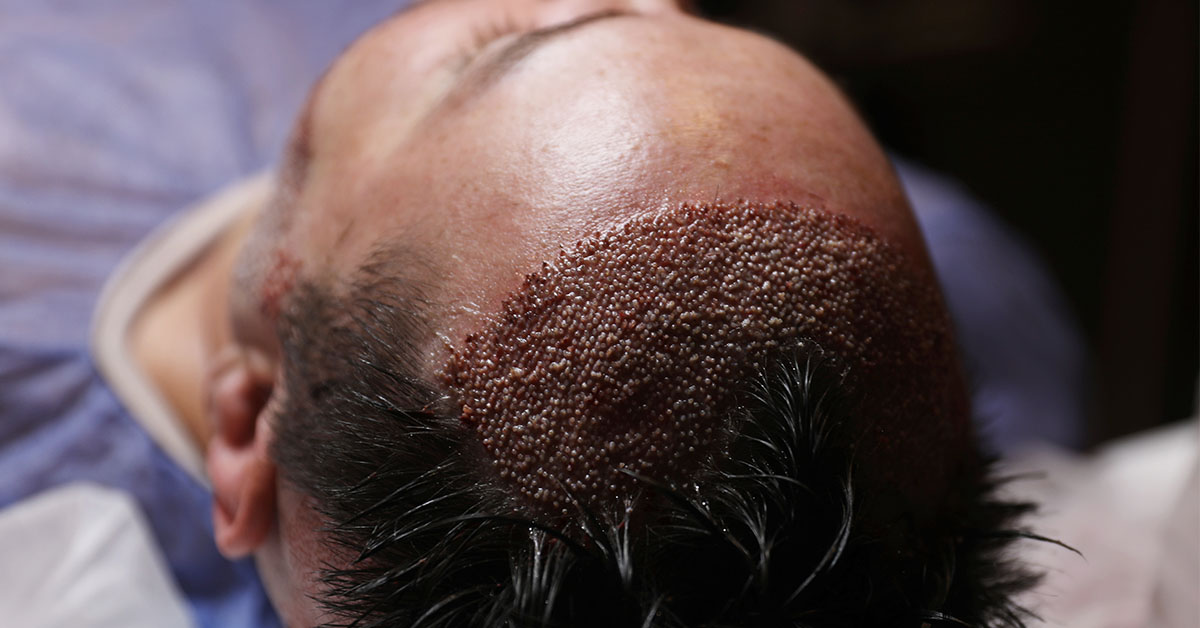 Since the DHI technique allows direct implantation of the grafts, there is no need for shaving in the area to be transplanted. Thanks to the pencil, the channel opening process is easily performed by entering through the long hair. In the FUE technique, the channels are opened with punch or sapphire tipped pens after the grafts are removed and prepared, and the next step is the graft placement process.
Since the DHI technique allows direct implantation of the grafts, there is no need for shaving in the area to be transplanted. Thanks to the pencil, the channel opening process is easily performed by entering through the long hair. In the FUE technique, the channels are opened with punch or sapphire tipped pens after the grafts are removed and prepared, and the next step is the graft placement process.
In the DHI technique, the assistants place the harvested grafts on the canal-shaped needle tip of the Choi which allows direct placement. The Assistant delivers the Choi pens prepared in this way to the specialist physician who performs the application one by one, while the specialist inserts the pen directly into the recipient area at the desired angle, he pushes the graft under the skin with the button on the top of the pen and returns the empty pen to the assistant.
In this way, channel opening, and graft placement are performed simultaneously. During this process, the assistants place grafts on the other empty pen tips and this cycle is repeated. The DHI pen method is a technique that can take longer than usual, although it depends on the process and the synchronization speed of the team.
The DHI method has reduced the need for shaving in the area to be transplanted due to the application method. For this reason, it is frequently used for unshaven transplants. Pens with diameters less than 1mm are used in thin and single root grafts. It is suitable for the cultivation of double and triple root grafts with diameters above 1mm.
Advantages and Disadvantages of Unshaven Hair Transplant
Advantages:
- The person quickly returns to their social and work life.
- It is difficult to be noticed by other people compared to the shaven method.
- Scabs and scars formed in the donor and recipient area can be hidden by long hair.
- There is no need to wait for the hair to return to its old form since it is not shaved.
- The psychological pressure on the person who will have the application is less.
Disadvantages:
- In an unshaven hair transplant, the number of grafts that can be harvested at once is less compared to the shaven hair transplant methods.
- If the grafts are harvested by inexperienced people because they harvest a large number of grads from a smaller area, the scars in the donor area may be evident.
- Extensive harvesting of grafts from a small area may damage the remaining roots.
- Since the number of grafts that can be harvested in a single session is small, it is difficult to apply to people with large bald areas.
- Healthy hair follicles may also be damaged when processing long hair in inexperienced hands.
- It contains additional hygienic risks that long hair may cause.
- The process takes longer.
- Its cost is higher.
At Now Hair Time Hair Transplant Center, we apply all shaven and unshaven hair transplant methods healthily with our experienced and expert staff.

